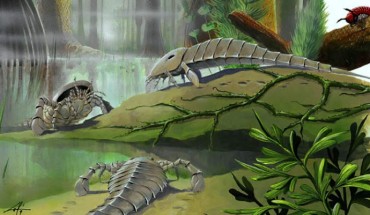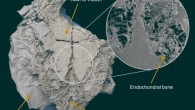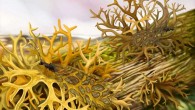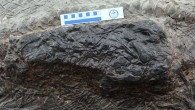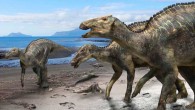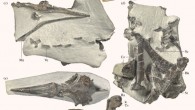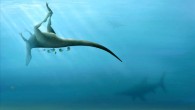Paleontologists have examined the fossilized remains of a previously unknown species of eurypterid (sea scorpion) and found direct evidence that these marine creatures were able to breathe in subaerial environments through their main respiratory organs. Lamsdell et al present details of the respiratory organs of Adelophthalmus pyrrhae from the Carboniferous of Montagne Noire, France, revealed through micro computed tomography (μ-CT) imaging. Image...

